
Leasing services company GATX (NYSE: GATX) announced better-than-expected revenue in Q4 CY2024, with sales up 12.2% year on year to $413.5 million. Its GAAP profit of $2.10 per share was 24.6% above analysts’ consensus estimates.
Is now the time to buy GATX? Find out by accessing our full research report, it’s free.
GATX (GATX) Q4 CY2024 Highlights:
- Revenue: $413.5 million vs analyst estimates of $409.8 million (12.2% year-on-year growth, 0.9% beat)
- Adjusted EPS: $2.10 vs analyst estimates of $1.69 (24.6% beat)
- Adjusted EBITDA: $227.1 million vs analyst estimates of $295.5 million (54.9% margin, 23.1% miss)
- EPS (GAAP) guidance for the upcoming financial year 2025 is $8.50 at the midpoint, beating analyst estimates by 3%
- Operating Margin: 29.6%, up from 26.5% in the same quarter last year
- Active Railcars: 102,966, up 1,799 year on year
- Market Capitalization: $5.49 billion
Company Overview
Originally founded to ship beer, GATX (NYSE: GATX) provides leasing and management services for railcars and other transportation assets globally.
Vehicle Parts Distributors
Supply chain and inventory management are themes that grew in focus after COVID wreaked havoc on the global movement of raw materials and components. Transportation parts distributors that boast reliable selection in sometimes specialized areas combined and quickly deliver products to customers can benefit from this theme. Additionally, distributors who earn meaningful revenue streams from aftermarket products can enjoy more steady top-line trends and higher margins. But like the broader industrials sector, transportation parts distributors are also at the whim of economic cycles that impact capital spending, transportation volumes, and demand for discretionary parts and components.
Sales Growth
Examining a company’s long-term performance can provide clues about its quality. Any business can put up a good quarter or two, but the best consistently grow over the long haul. Unfortunately, GATX’s 5.5% annualized revenue growth over the last five years was tepid. This was below our standard for the industrials sector and is a rough starting point for our analysis.
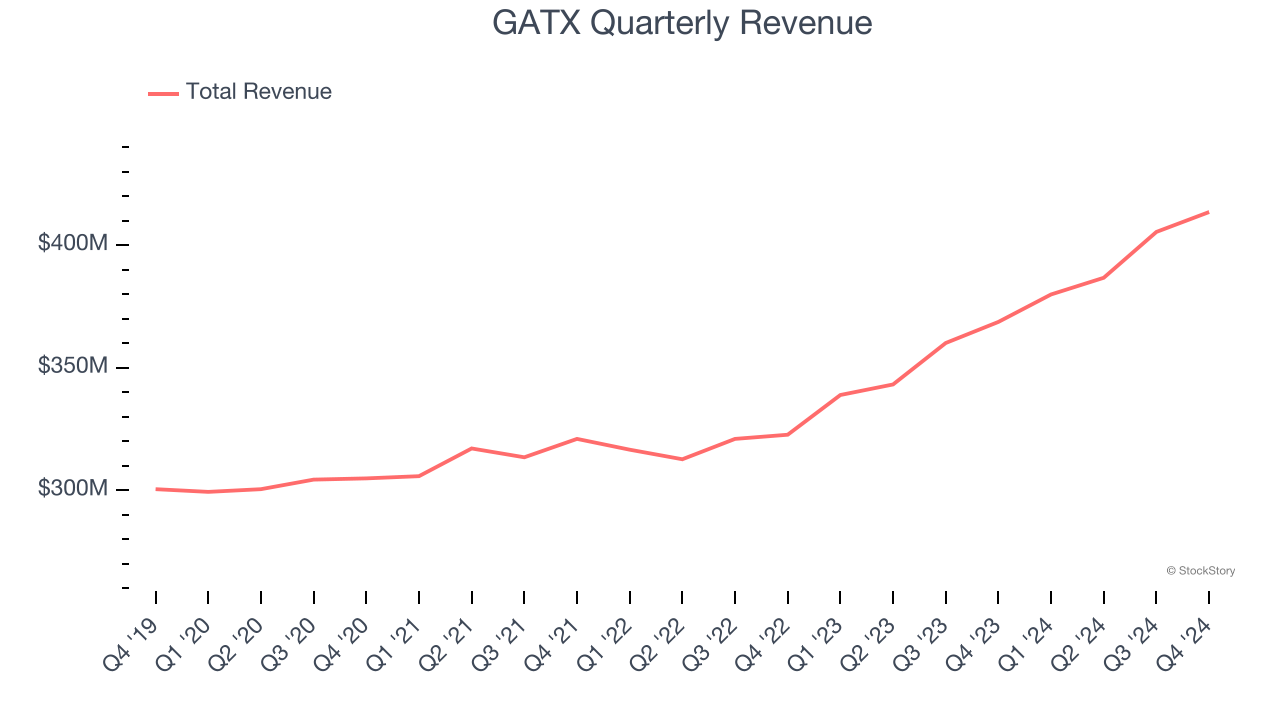
Long-term growth is the most important, but within industrials, a half-decade historical view may miss new industry trends or demand cycles. GATX’s annualized revenue growth of 11.6% over the last two years is above its five-year trend, suggesting its demand recently accelerated. 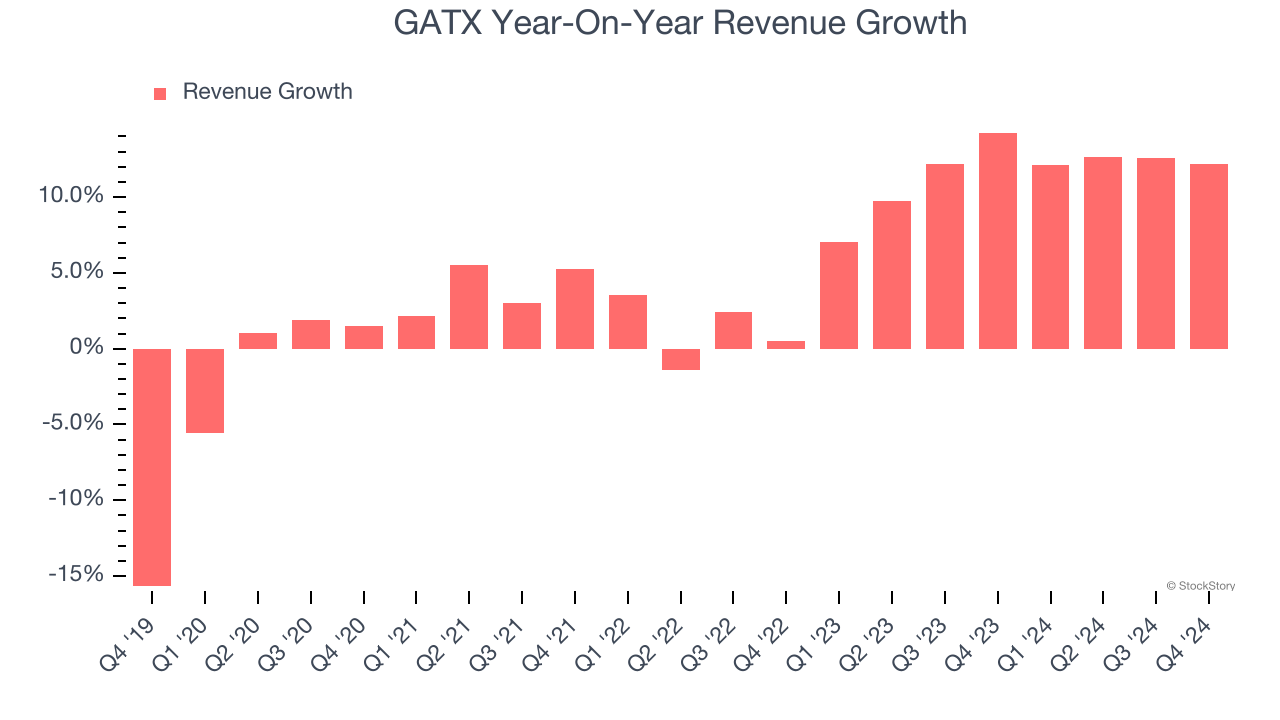
GATX also discloses its number of active railcars, which reached 102,966 in the latest quarter. Over the last two years, GATX’s active railcars were flat. Because this number is lower than its revenue growth during the same period, we can see the company’s monetization has risen. 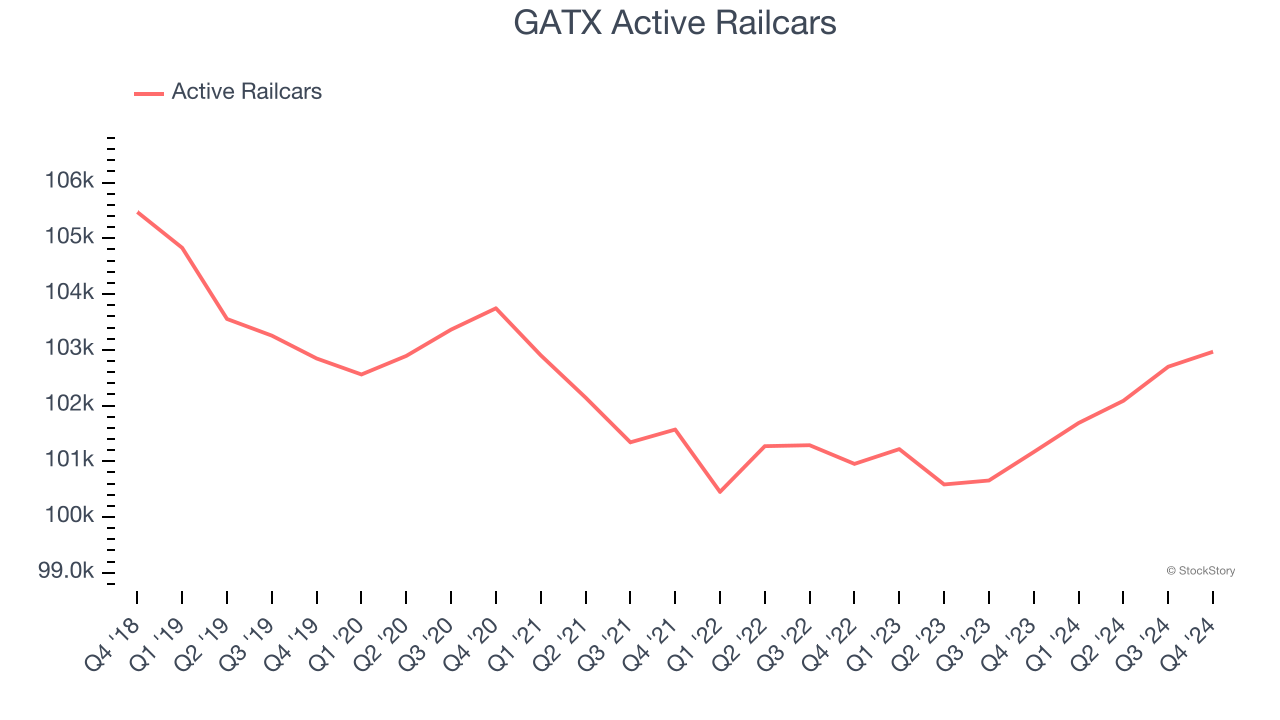
This quarter, GATX reported year-on-year revenue growth of 12.2%, and its $413.5 million of revenue exceeded Wall Street’s estimates by 0.9%.
Looking ahead, sell-side analysts expect revenue to grow 7.6% over the next 12 months, a deceleration versus the last two years. Despite the slowdown, this projection is above the sector average and indicates the market sees some success for its newer products and services.
Software is eating the world and there is virtually no industry left that has been untouched by it. That drives increasing demand for tools helping software developers do their jobs, whether it be monitoring critical cloud infrastructure, integrating audio and video functionality, or ensuring smooth content streaming. Click here to access a free report on our 3 favorite stocks to play this generational megatrend.
Operating Margin
GATX has been a well-oiled machine over the last five years. It demonstrated elite profitability for an industrials business, boasting an average operating margin of 26.5%. This result isn’t surprising as its high gross margin gives it a favorable starting point.
Analyzing the trend in its profitability, GATX’s operating margin rose by 6.2 percentage points over the last five years, showing its efficiency has meaningfully improved.
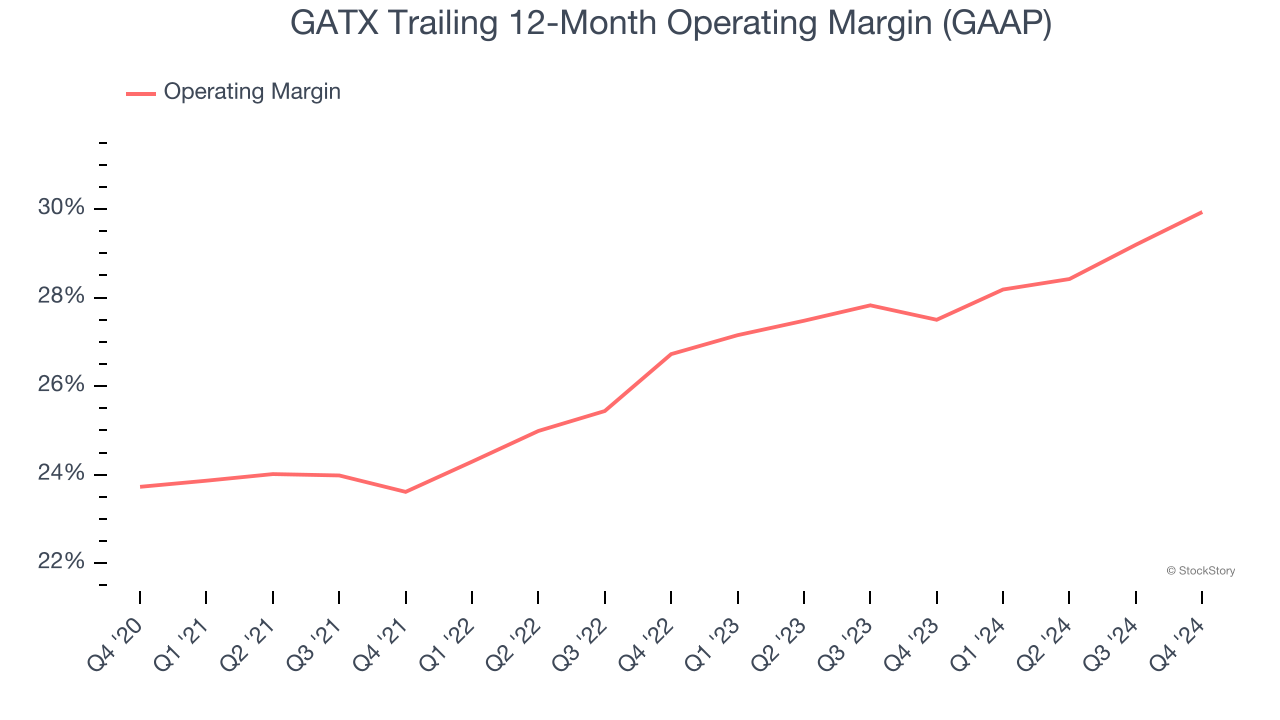
In Q4, GATX generated an operating profit margin of 29.6%, up 3.1 percentage points year on year. The increase was encouraging, and since its operating margin rose more than its gross margin, we can infer it was recently more efficient with expenses such as marketing, R&D, and administrative overhead.
Earnings Per Share
We track the long-term change in earnings per share (EPS) for the same reason as long-term revenue growth. Compared to revenue, however, EPS highlights whether a company’s growth is profitable.
GATX’s unimpressive 6.2% annual EPS growth over the last five years aligns with its revenue performance. On the bright side, this tells us its incremental sales were profitable.
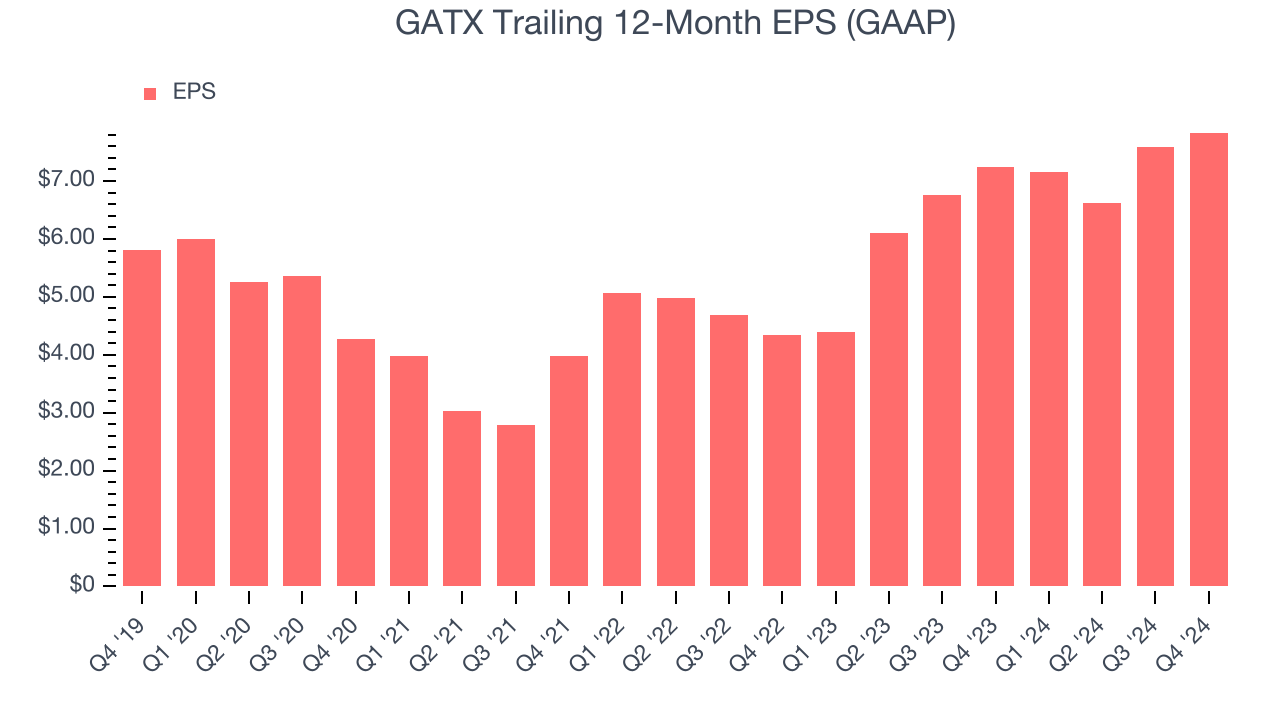
Like with revenue, we analyze EPS over a more recent period because it can provide insight into an emerging theme or development for the business.
GATX’s two-year annual EPS growth of 34.3% was fantastic and topped its 11.6% two-year revenue growth.
In Q4, GATX reported EPS at $2.10, up from $1.84 in the same quarter last year. This print easily cleared analysts’ estimates, and shareholders should be content with the results. Over the next 12 months, Wall Street expects GATX’s full-year EPS of $7.84 to grow 5.3%.
Key Takeaways from GATX’s Q4 Results
It was great to see GATX’s full-year EPS guidance exceed analysts’ expectations. We were also glad this quarter's revenue and EPS outperformed Wall Street’s estimates. Overall, we think this was a decent quarter with some key metrics above expectations. The stock traded up 3.4% to $159.72 immediately after reporting.
Sure, GATX had a solid quarter, but if we look at the bigger picture, is this stock a buy? If you’re making that decision, you should consider the bigger picture of valuation, business qualities, as well as the latest earnings. We cover that in our actionable full research report which you can read here, it’s free.





